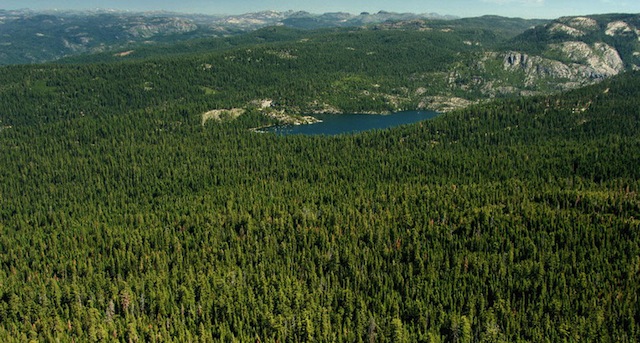
The 250-square-mile Rim Fire has been burning perilously close to a longstanding experimental forest near Sonora. Losing it would be a setback for forestry and as fate would have it, fire management.
For 80 years, the Stanislaus-Tuolumne Experimental Forest has been a trove of data for foresters.
“A lot of what we’re doing is trying to understand how forests have changed over time,” Eric Knapp told me in an interview at his lab in Redding. Knapp is a research ecologist with the U.S. Forest Service and the “STEF” is sort of “his baby.” He says research there has shed light on why forests are burning with more intensity now than before the modern era of logging and fire suppression. These forests looked a lot different then, Knapp told me. Trees were fewer and bigger, and even though they burned more often, they tended to survive fires better than today’s woods.
“These forests used to have kind of a group-and-gap arrangement, so in a sense they had little mini-fuel breaks within the stands,” he explained. The same areas today have about three times as many trees and more fuel on the ground. “A lot of those gaps have filled in with trees, so that when fires burn today, they just burn more intensely. The fuels are more continuous and it really can get a head of steam.”